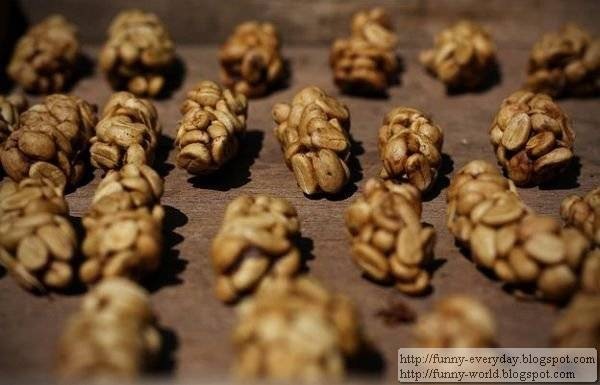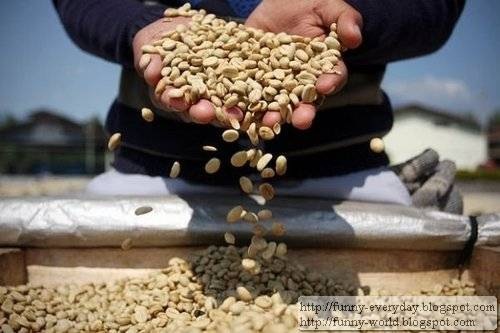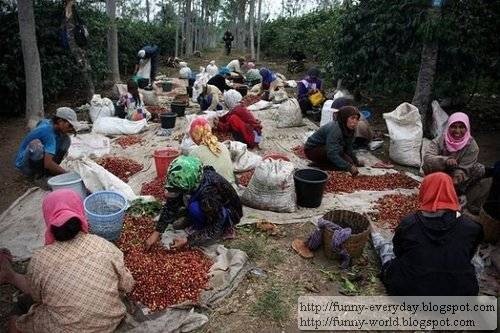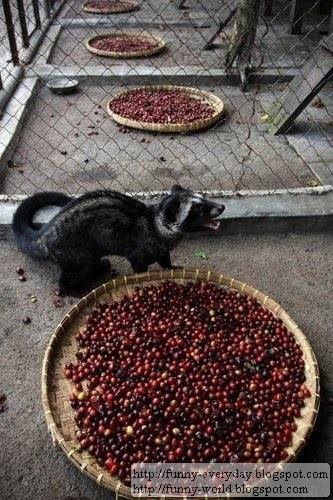Kopi luwak, or civet coffee, is coffee made from the beans of coffee berries which have been eaten by the Asian Palm Civet (Paradoxurus hermaphroditus) and other related civets, then passed through its digestive tract. A civet eats the berries for their fleshy pulp. In its stomach, proteolytic enzymes seep into the beans, making shorter peptides and more free amino acids. Passing through a civet's intestines the beans are then defecated, keeping their shape. After gathering, thorough washing, sun drying, light roasting and brewing, these beans yield an aromatic coffee with much less bitterness, widely noted as the most expensive coffee in the world.

Kopi luwak is produced mainly on the islands of Sumatra, Java, Bali and Sulawesi in the Indonesian Archipelago, and also in the Philippines (where the product is called motit coffee in the Cordillera and kape alamid in Tagalog areas) and also in East Timor (where it is called kafé-laku). Weasel coffee is a loose English translation of its name cà phê Chồn in Vietnam, where popular, chemically simulated versions are also produced.
Early production began when beans were gathered in the wild from where a civet would defecate as a means to mark its territory. On farms, civets are either caged or allowed to roam within defined boundaries.
Coffee cherries are eaten by a civet for their fruit pulp. After spending about a day and a half in the civet's digestive tract the beans are then defecated in clumps, having kept their shape and still covered with some of the fleshy berry's inner layers. They are gathered, thoroughly washed, sun dried and given only a light roast so as to keep the many intertwined flavors and lack of bitterness yielded inside the civet.
Early production began when beans were gathered in the wild from where a civet would defecate as a means to mark its territory. On farms, civets are either caged or allowed to roam within defined boundaries.





Coffee cherries are eaten by a civet for their fruit pulp. After spending about a day and a half in the civet's digestive tract the beans are then defecated in clumps, having kept their shape and still covered with some of the fleshy berry's inner layers. They are gathered, thoroughly washed, sun dried and given only a light roast so as to keep the many intertwined flavors and lack of bitterness yielded inside the civet.
Pictures: http://env.people.com.cn/BIG5/10415134.html

No comments:
Post a Comment